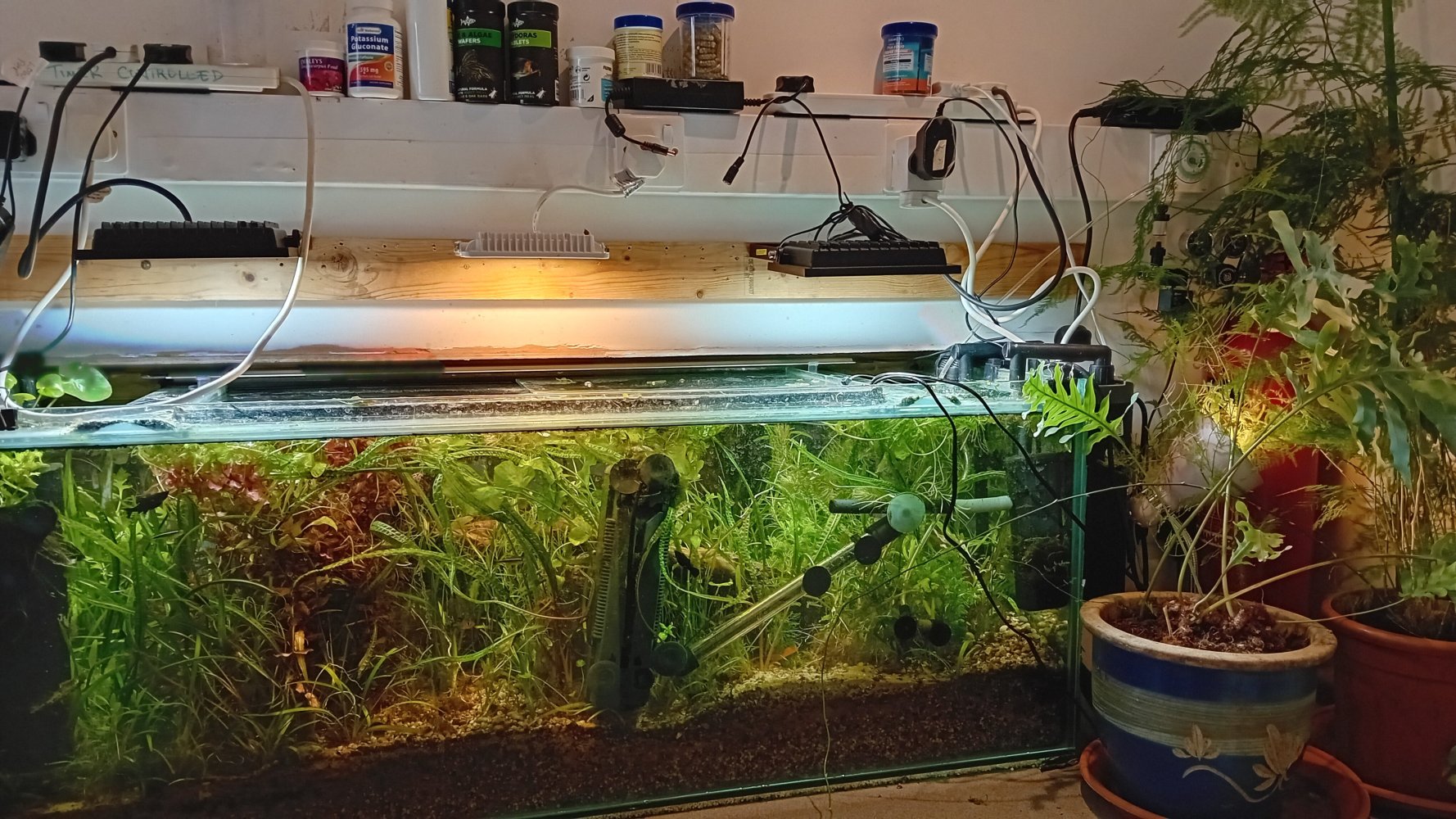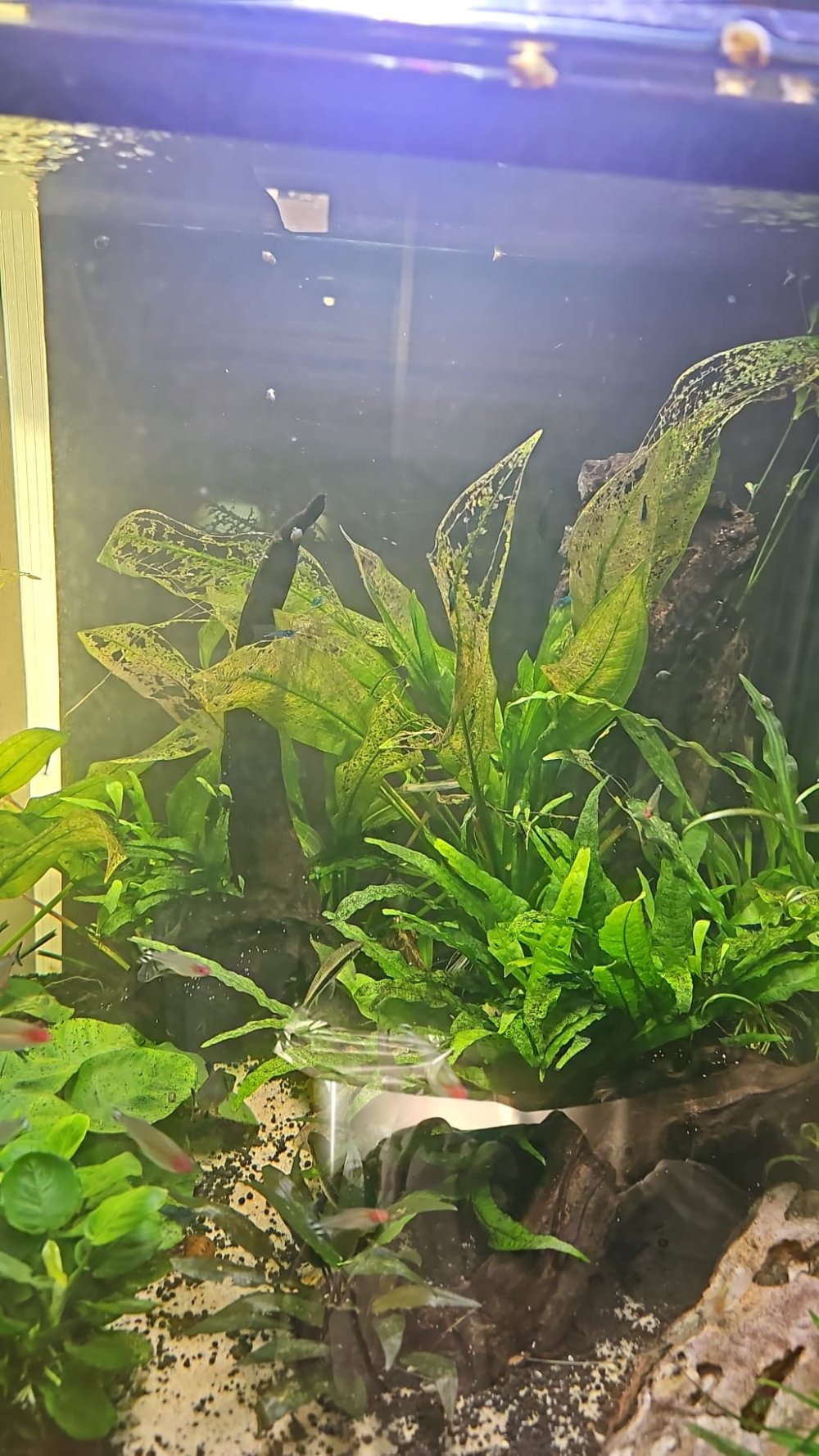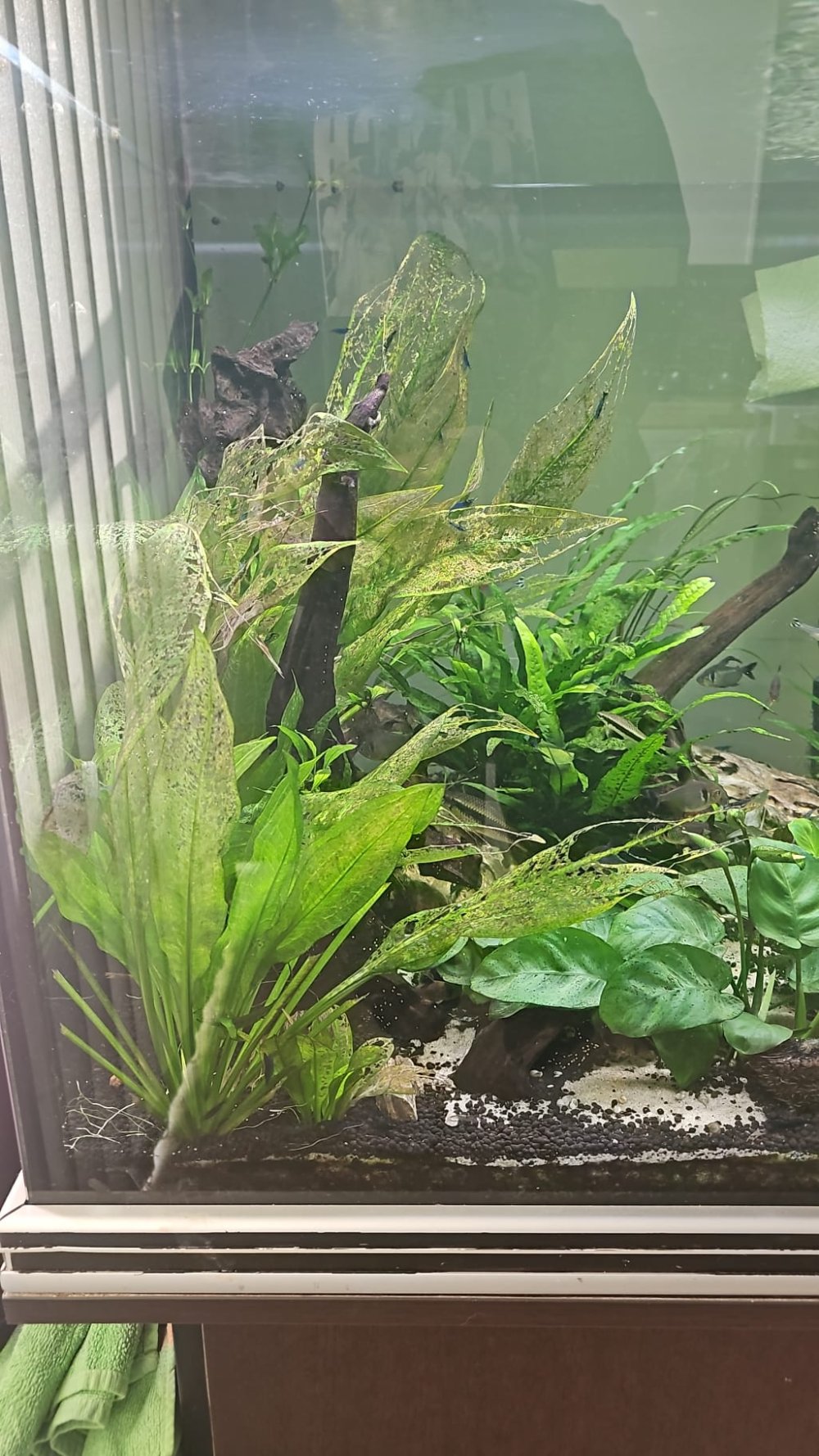Connswater
Member
I don't disagree and you raise matters I am not at all convinced about. Delighted to get more opinion, advice and scientific input.Some may disagree with me
I really am not all sure what happens in a deep bed substrate. Mine is over 4 inches deep at the rear, some sand, soil and horticultural grit.
I used cat litter clay under play pit sand, once, in a previous tank and it seemed to work great. Even though lots of advice is against sand, allegedly it compacts down and roots don't grow well, not in my experience. I used cat litter clay in the belief then, that it would hold on to nutrients, the cation exchange phenomenon, but I really do not know. The tank ran for a decade with very little water column fertilisation.
I still do use slow release fertiliser tabs on greedy heavy rooted plants - some crypts for example, and they seem to respond, they also seem to like compressed/dry soil/coir plugs. They are an easy mess free way of adding humus to an established tank, or so I think. How long a sand, soil and grit substrate holds nutrients I simply do not know. How fish waste and botanical additions - I love dried beech and oak leaves in the tank - affect substrate when using filtration I again have no idea.
I have however, gone for periods of many months not fertilising my current main tank except for sequestered iron at water changes and of course fish food/fish waste and the tank does have a reasonably nutrient rich substrate and injected CO2. I harvest floating plants normally twice a week and chop back rooted vegetation fortnightly. My tank is rear access so cutting back is a bit brutal and clumsy, but with floodlights and CO2 I haven't been tempted to rush out and buy a RGB incredibly expensive dedicated LED lights. I spent a lot of dosh on a Dennerle bar, works well but no better than a 100 watt floodlight. But my tank is a compromise, if I up the light intensity either by an extra 100 watt floodlight or by a heavy removal of floating plants, Rotala macrandra flourishes and becomes one of the dominant plants but green filament algae also then becomes more an issue.
When I grew Amazon swords I always used osmocote fertiliser, I simply don't know how long the nutrients lasted, looking back the tank was quite modestly filtered. I tended to add new balls of fertiliser every 4-6 months, but I suspect there was considerable leaching into the water column. I remember a blue green algae issue which at the time I blamed on the then new, then fairly quickly discontinued Triton T8 tubes, but organic load may have been too high and I simply inadvertently solved that issue with big water changes.
However, in my main tank now, even with rich substrates, soil and nutrient tabs, capped with sand and horticultural grit, and some pea gravel at the front (the latter is only to stop me picking up sand grains in my magnetic scraper) my measured levels of Nitrate and Phosphate in the water remain sensible or sometimes too low. I add iron when I change water and add water column fertiliser when the water is short of macro nutrients, I don't like to add a lot of water column fertiliser since it seems to be a factor in algae problems, however, I don't grow epiphytes, but I do use a lot of floating plants, and the frogbit 'speaks to me' if nutrient levels are too low.
I've been meaning for some time to post a picture of the business side of my tank, the back. I did buy, about 7 years ago, and did use for some time, a Dennerle 66 watt LED, it cost me, as I said, quite a lot, in fact about £200, I have a cheap Superfish 54 watt, to occasionally add a boost but I find it a bit too cold, I prefer a warmer lower Kelvin light. I normally use a black panel on this side of the tank to hide electric cables etc., the set up might interest some folks. The 5Kg CO2 bottle hides behind the houseplants to the side. But it is the utility room so not really an issue.
Sorry for an overly long post from me.
Attachments
Last edited:







